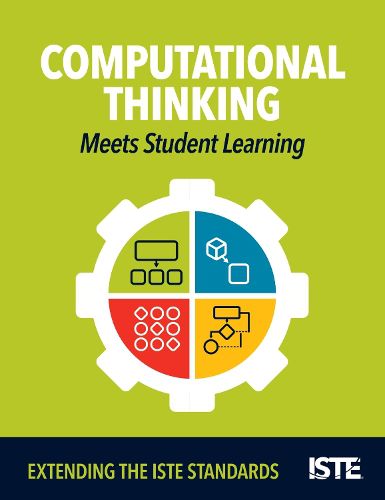Readings Newsletter
Become a Readings Member to make your shopping experience even easier.
Sign in or sign up for free!
You’re not far away from qualifying for FREE standard shipping within Australia
You’ve qualified for FREE standard shipping within Australia
The cart is loading…






This guide to the ISTE Standards for Educators: Computational Thinking Competencies will help educators incorporate CT in their curriculum to deepen student learning.
Computational thinking (CT) is a powerful ingredient for solving ambiguous, complex and open-ended problems by drawing on principles and practices central to computer science (CS). CT is at the core of CS and is a gateway to sparking student interest and confidence in learning CS.
The ISTE Standards for Educators: Computational Thinking Competencies were created to inspire every educator to add more computational thinking into their core problem-solving strategies. These competencies augment and home in on the competencies embedded in the ISTE Standards for Students and Educators.
The information in this guide will provide a framework and structure to build creative learning opportunities in CT and increase students’ ability to adapt to unfamiliar challenges, allowing for more success with innovative lesson plans.
This booklet contains:
An overview of computer science and computational thinking and how they interact.
Examples from across the subject/grade spectrum, including kindergarten reading, third grade math, sixth grade science and 10th grade social studies.
Ideas for adding CT to lessons to enhance the knowledge base of students, letting them build the skills and confidence to persist when unexpected obstacles arise.
Reflection questions and tips to help educators integrate CT into their lessons.
Explanation of how the CT competencies complement the ISTE Standards for Educators.
This booklet will help educators understand the CT Competencies so they can effectively build CT into their curriculum, no matter what subject they teach.
$9.00 standard shipping within Australia
FREE standard shipping within Australia for orders over $100.00
Express & International shipping calculated at checkout
This guide to the ISTE Standards for Educators: Computational Thinking Competencies will help educators incorporate CT in their curriculum to deepen student learning.
Computational thinking (CT) is a powerful ingredient for solving ambiguous, complex and open-ended problems by drawing on principles and practices central to computer science (CS). CT is at the core of CS and is a gateway to sparking student interest and confidence in learning CS.
The ISTE Standards for Educators: Computational Thinking Competencies were created to inspire every educator to add more computational thinking into their core problem-solving strategies. These competencies augment and home in on the competencies embedded in the ISTE Standards for Students and Educators.
The information in this guide will provide a framework and structure to build creative learning opportunities in CT and increase students’ ability to adapt to unfamiliar challenges, allowing for more success with innovative lesson plans.
This booklet contains:
An overview of computer science and computational thinking and how they interact.
Examples from across the subject/grade spectrum, including kindergarten reading, third grade math, sixth grade science and 10th grade social studies.
Ideas for adding CT to lessons to enhance the knowledge base of students, letting them build the skills and confidence to persist when unexpected obstacles arise.
Reflection questions and tips to help educators integrate CT into their lessons.
Explanation of how the CT competencies complement the ISTE Standards for Educators.
This booklet will help educators understand the CT Competencies so they can effectively build CT into their curriculum, no matter what subject they teach.